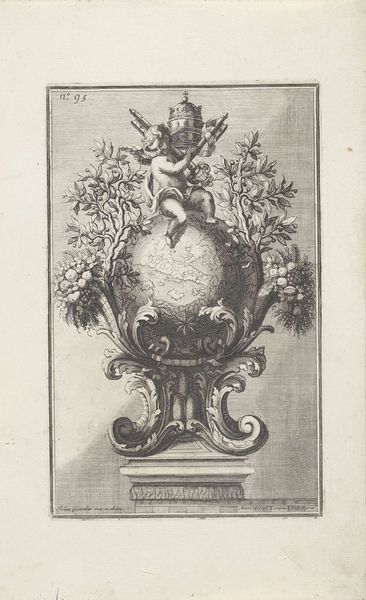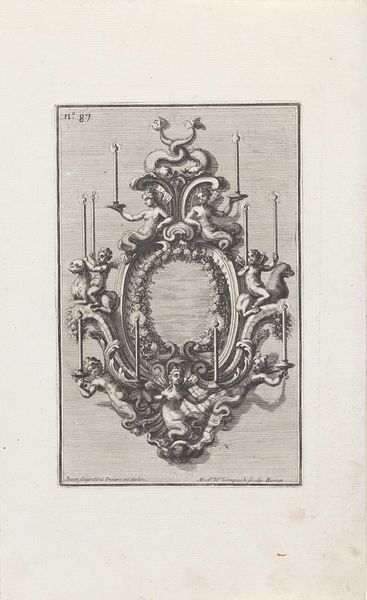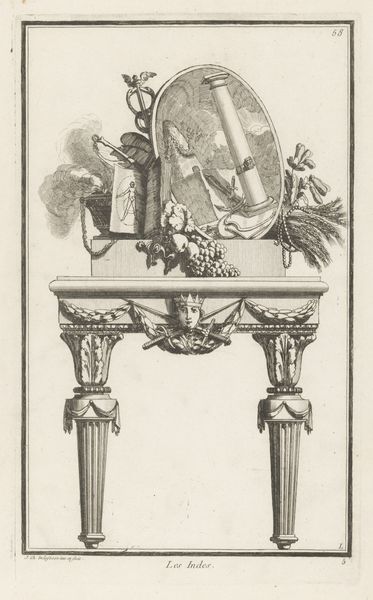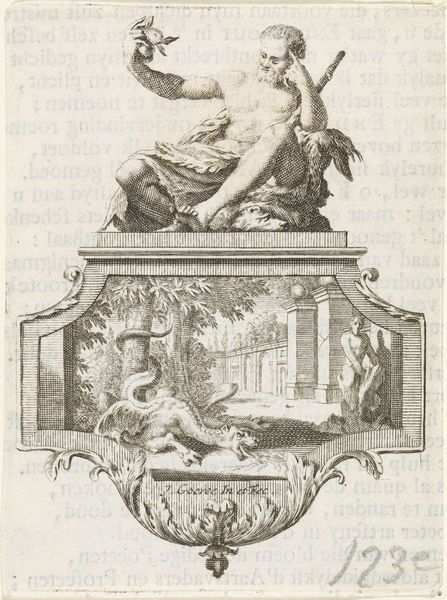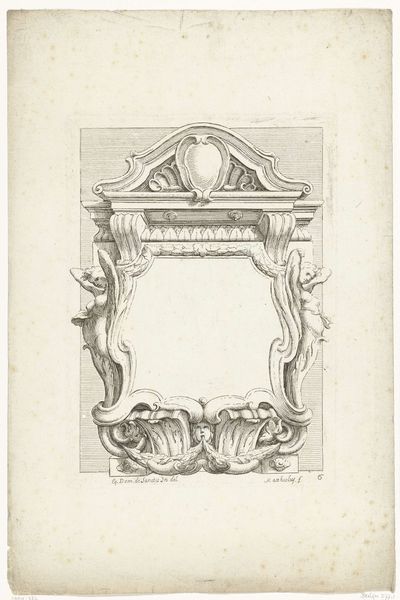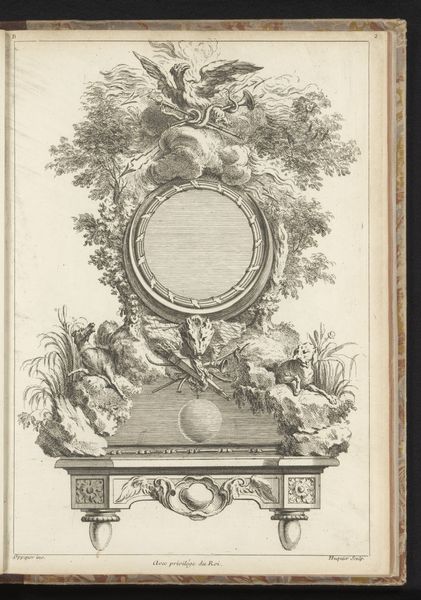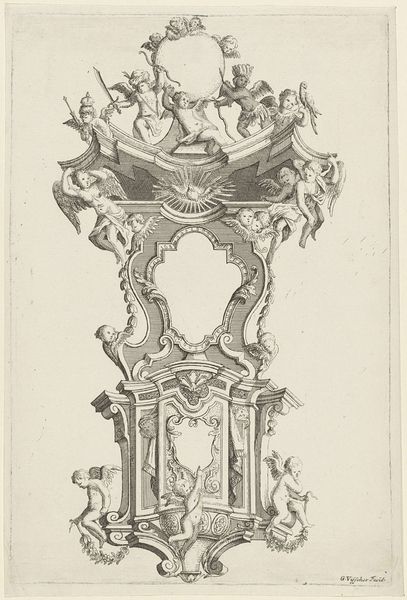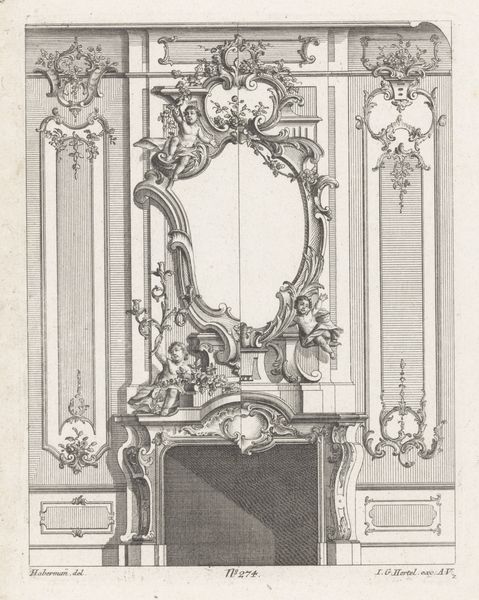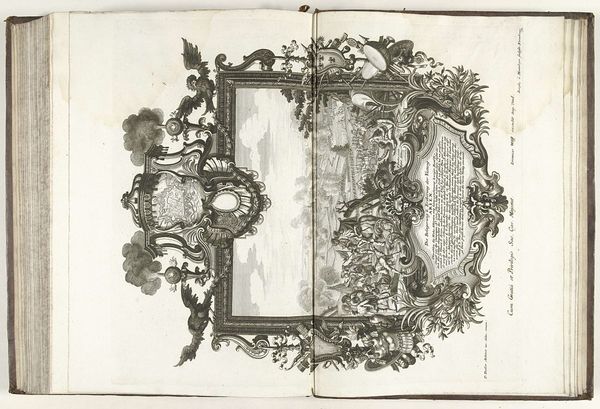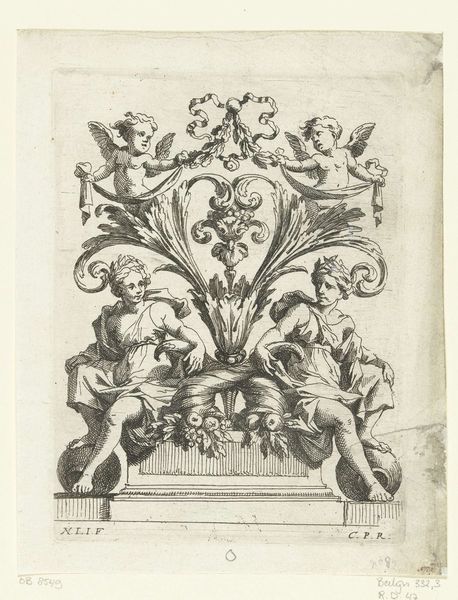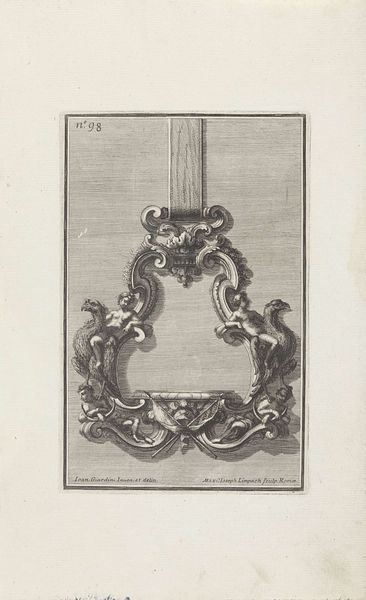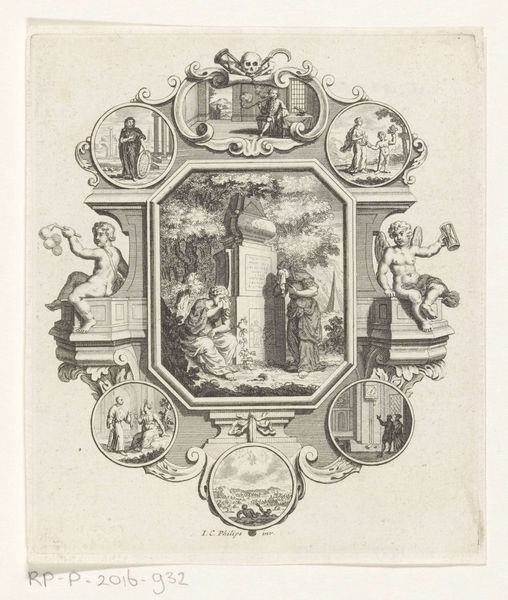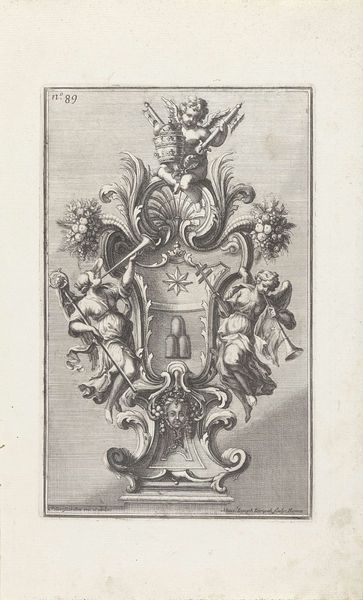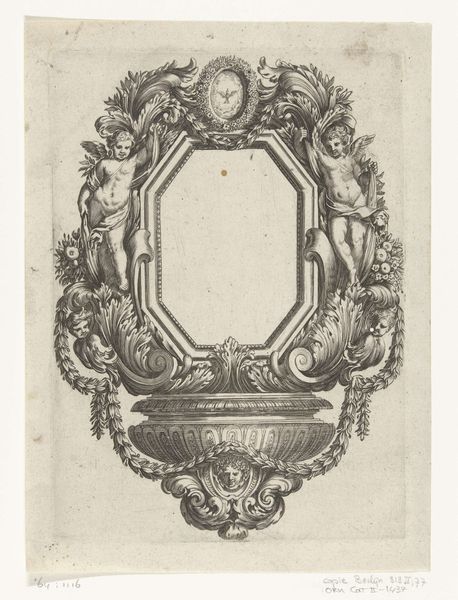
Ornament met Pegasus, twee Muzen, twee putti en een schedel 1714
0:00
0:00
maximilianjosephlimpach
Rijksmuseum
ornament, engraving
#
ornament
#
allegory
#
baroque
#
old engraving style
#
figuration
#
line
#
history-painting
#
engraving
Dimensions: height 268 mm, width 170 mm
Copyright: Rijks Museum: Open Domain
This is an engraving by Maximilian Joseph Limpach, featuring Pegasus, Muses, putti, and a skull. The winged horse Pegasus, a symbol of inspiration, soars above the scene, ready to take flight. The muses, goddesses of the arts, sit on either side of the frame. Below, putti play amongst the rocks and foliage. But look closer, for at the base a skull rests ominously. It is a 'memento mori', a reminder of mortality. Skulls have appeared in art since antiquity. We find them decorating Roman mosaics and Christian paintings alike. Over time its symbolism has shifted from a symbol of triumph over death to a meditation on the fleeting nature of life. The skull is a symbol of our deep-seated fears and anxieties. The cycle of life and death, and the desire to transcend mortality—all surface here, engaging us on a subconscious level. Through constant reappearance and reinvention, symbols like the skull reflect our timeless obsessions.
Comments
No comments
Be the first to comment and join the conversation on the ultimate creative platform.
